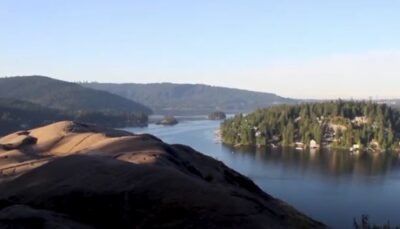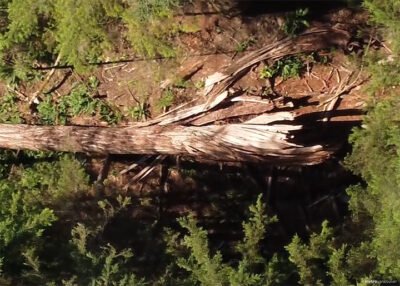SFU paleobotanist Rolf Mathewes and his collaborators have found evidence of human presence in Haida Gwaii dating to 13,000 years ago – roughly 2,200 years earlier than previously thought.
Mathewes has been documenting forest history and climate change in the Haida Gwaii archipelago for decades. As one of the first areas in British Columbia to deglaciate after the ice age, Mathewes says the islands comprise a wealth of information.
“Past excavations on an archaeological site on Ellen Island in Haida Gwaii have uncovered hearth features and thousands of stone and wood artifacts and fossil fauna and flora that date to approximately 10,800 to 10,500 years ago.”
Mathewes and his team analyzed a two-meter-long sediment core taken from an ancient buried pond on Ellen Island. The pond sediments and the Kilgii Gwaay archaeological site that surround the pond are submerged at high tide, and archaeologists can only investigate during low tides.
“Kilgii Pond was open water until roughly 10,500 years ago, when rising sea levels covered it with a thick layer of marine sand and gravel,” says Mathewes.
Radiocarbon dating showed the bottom of the core to be about 14,500 years old. Researchers analyzed fossil pollen and charcoal particles to reconstruct the forest and fire history from that time until rising sea levels flooded the site roughly 10,500 years ago.
Not surprisingly, charcoal is most abundant around the time of the site’s known occupation as a hunting and fishing camp, between 10,800 and 10,500 years ago.
“The most remarkable finding,” says Mathewes, “was when we discovered high concentrations of charcoal in the core that point to man-made fires 2,200 years before the known occupation.”
While the team considered the possibility that the charcoal could represent evidence of forest fires, Mathewes says “this region is very wet and lightning and natural forest fires are very rare. Given the abundance of charcoal back to 13,000 years ago, and the presence of fire pits and evidence of food processing, deliberate human ignition of these early fires is the most likely explanation, even without any artifacts at this time.”
The discovery also supports the theory that a coastal migration route used by early humans from Alaska/Yukon followed the North Pacific Coast earlier than a hypothesized inland route east of the Rocky Mountains where glaciers lingered longer.
The team’s work adds to a deep cache of information about how the first humans inhabited the area.
“We have ample evidence that humans had adapted to a maritime existence, constructing and using boats, and obtaining a large portion of their diet from fish, shellfish and other marine resources in addition to mammals and birds,” says Mathewes.
“It’s not surprising that this highly adapted maritime population was present on Haida Gwaii well before the artifacts were deposited.”
The study is published online in Vegetation History and Archaeobotany.
Diane Mar-Nicolle is Communications Officer at SFU Faculty of Science.










Comments
NOTE: The North Shore Daily Post welcomes your opinions and comments. We do not allow personal attacks, offensive language or unsubstantiated allegations. We reserve the right to edit comments for length, style, legality and taste and reproduce them in print, electronic or otherwise. For further information, please contact the editor or publisher, or see our Terms and Conditions.